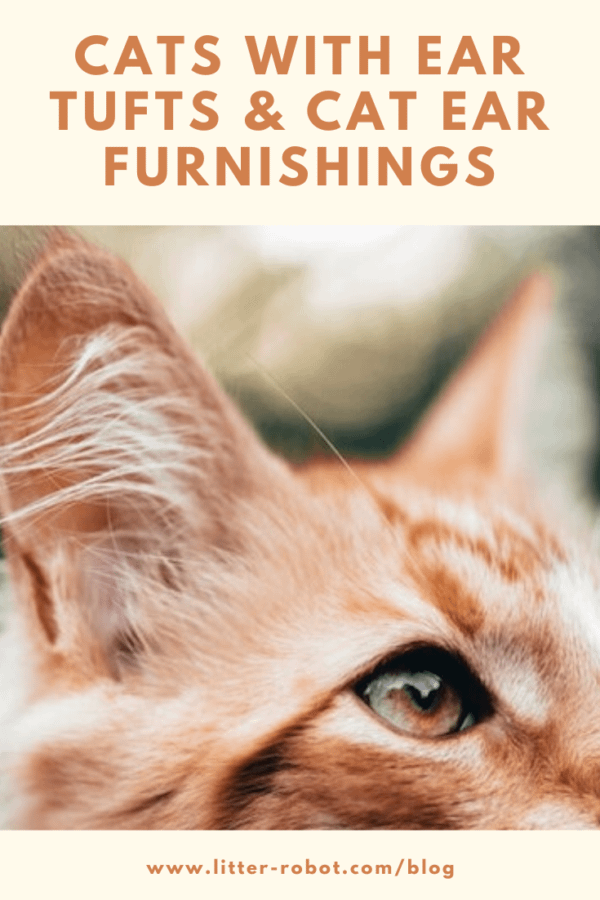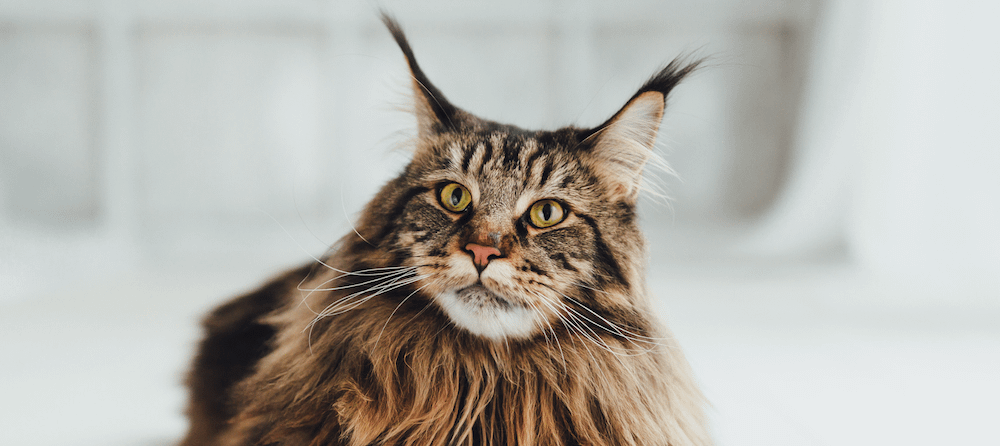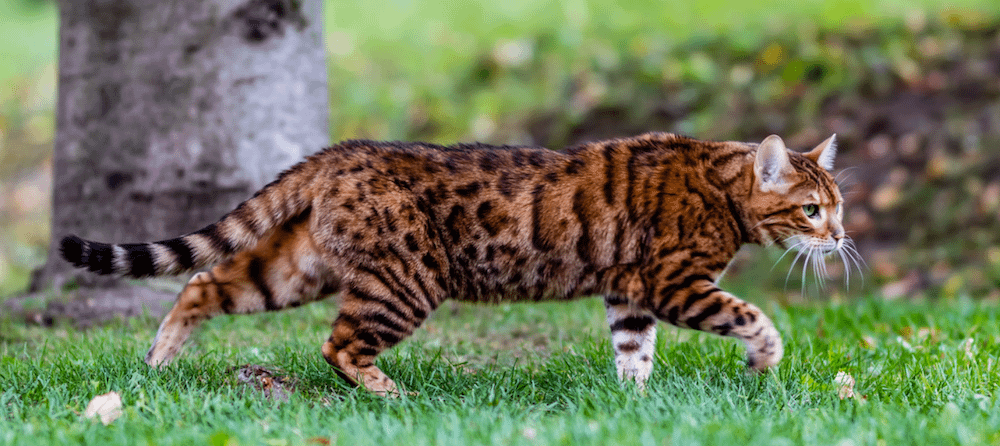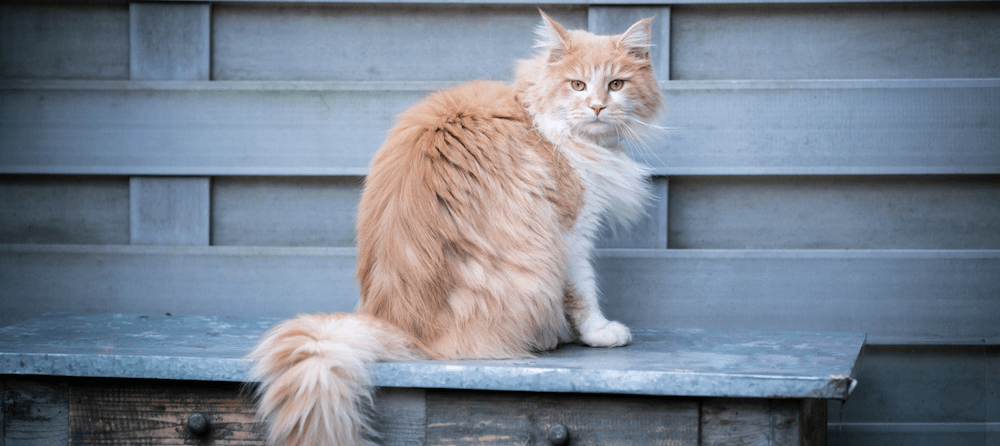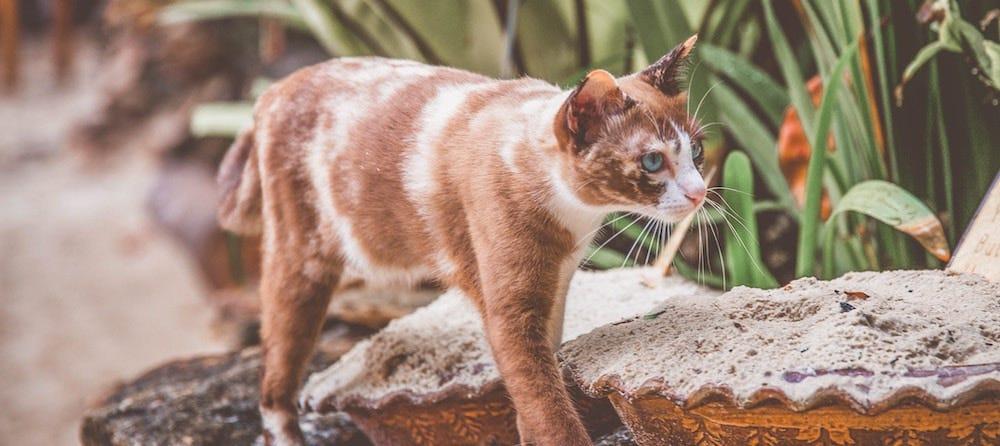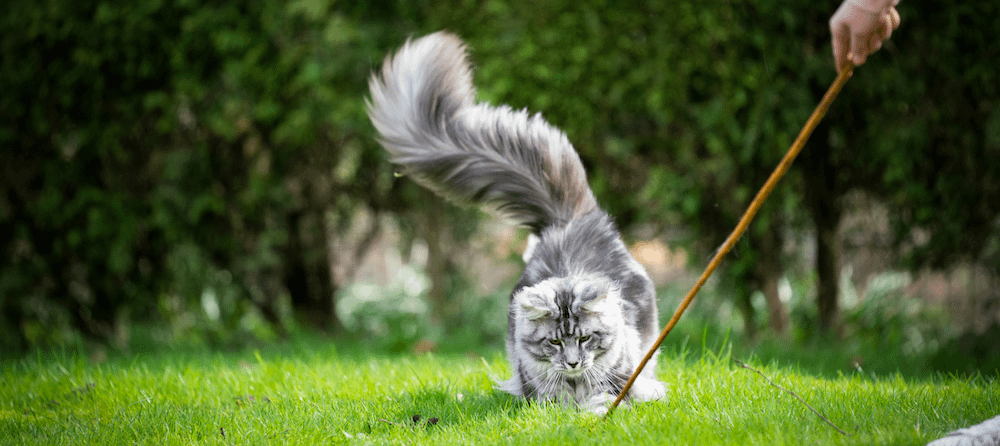It’s the little things in life: Your cat’s squishy toe beans, heterochromia eyes, and primordial pouch are all adorable. But cat ear furnishings (ear floof) take it to a whole new level. Let’s learn more about cats with ear tufts and cat ear furnishings — otherwise known as new little things in life to smile about.
Cat ear tufts vs. cat ear furnishings
You may be wondering, what is the difference between cat ear tufts and cat ear furnishings?

Cat ear tufts, sometimes known as lynx tips, are the fur that grows from the tips of the ears. According to Catster, cat ear tufts work to keep debris at bay and help to filter sound directly into a cat’s ears.
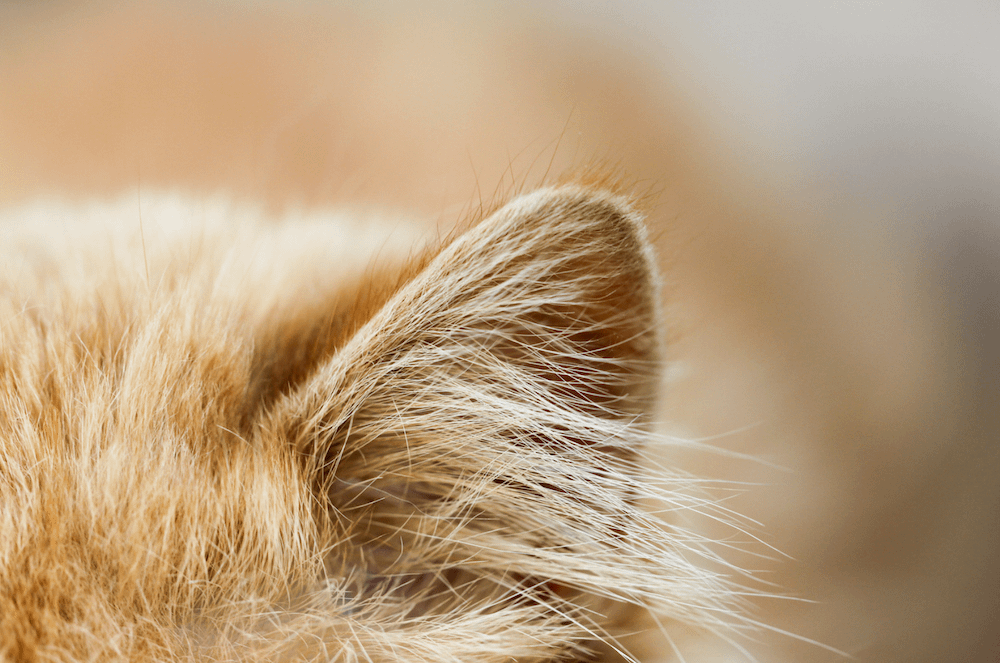
On the other hand, cat ear furnishings are the hairs found on the inner portion of the ears. This ear floof can help cats pick up faint sound vibrations, which aids in hunting and other hearing-centric activities. Many Domestic Longhair cats (and some Domestic Shorthair cats) have ear furnishings, regardless of breed.
14 cats with ear tufts and ear furnishings
Along with good ol’ Domestic Longhair cats, there are several cat breeds with outstanding ear tufts and ear furnishings.
American Curl

The American Curl cat has unique ears that curl back, offering a cute helping of both ear tufts and ear furnishings. This feature began as a random mutation. Breeders saw the potential in the breed, so they began to work to preserve and establish the mutation.
The American Curl is a moderately active, people-oriented cat that enjoys spending quality time with their humans. This breed’s ears are specifically more susceptible to gathering debris and dirt in their ear canals. You’ll want to check their ears frequently, using a cotton ball to gently clean them if you see any build-up.
Birman
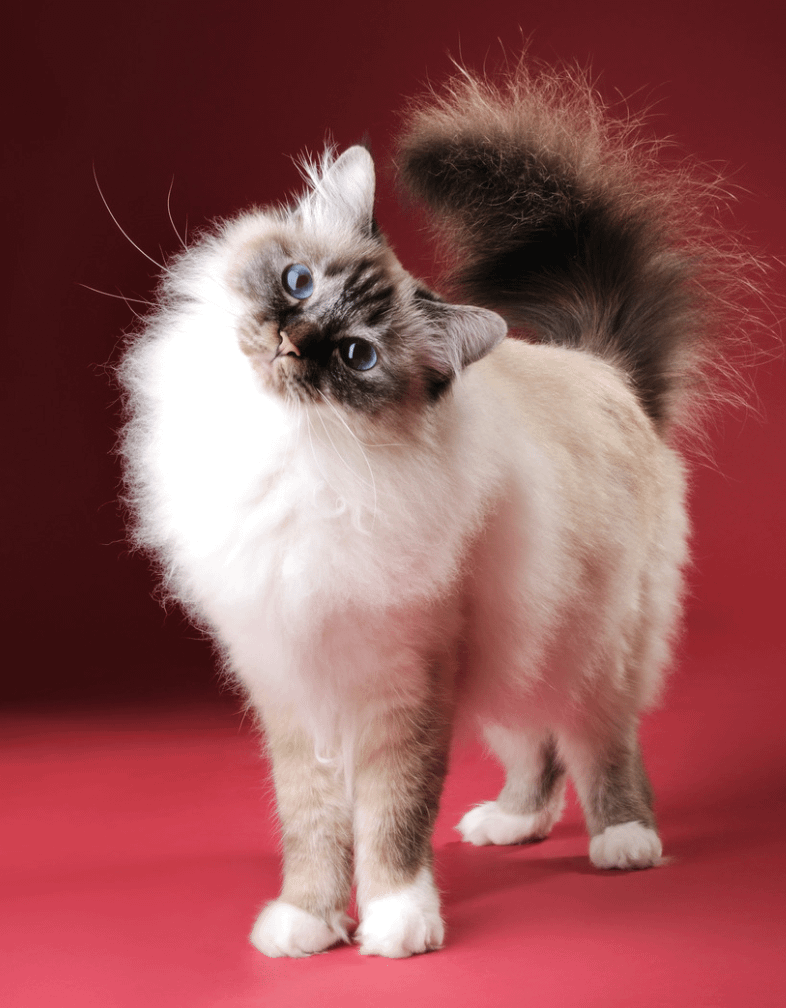
It’s said that Birman cats were sacred companions to the temple priests in ancient Burma, which means they were showing off their impressive ear furnishings to royalty! Legend has it, a blue-eyed goddess played an important role in establishing the beautiful looks of this breed.
Despite their royal status, Birmans are docile, playful, and low-maintenance. They are typically quiet (unlike their Siamese cousins) and make a great companion looking for a laid-back lifestyle.
Highlander
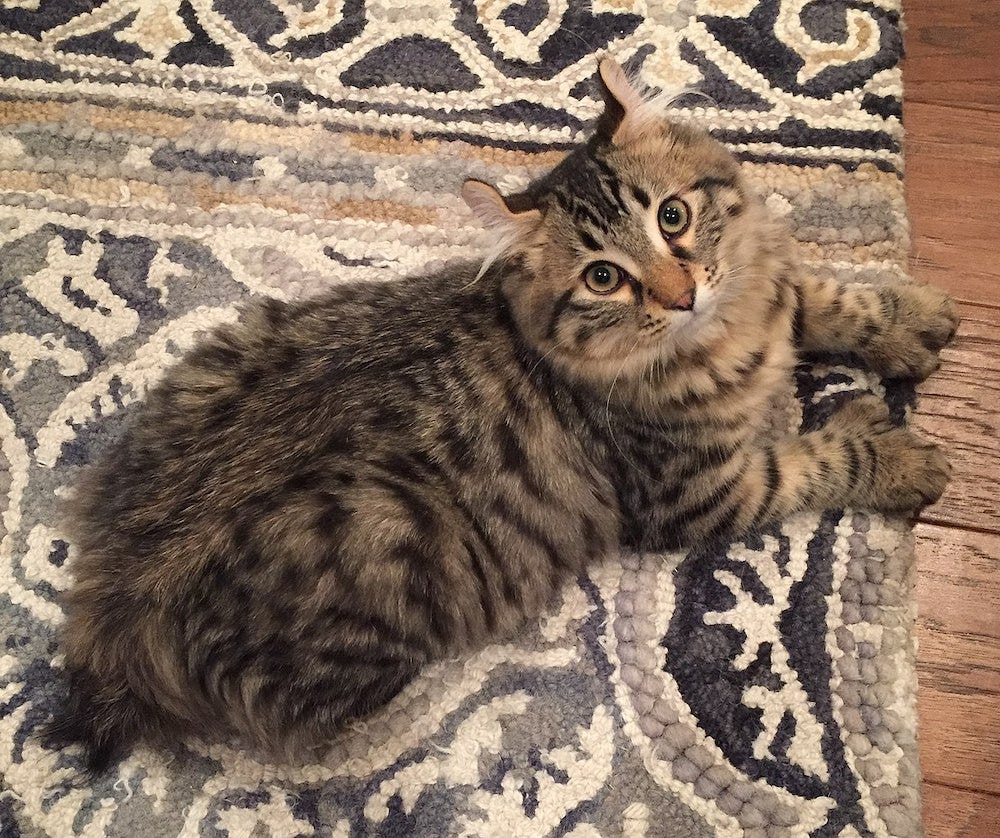
The Highlander cat with their peculiar, furnished curled ears is a cross between a Desert Lynx and the Jungle Curl. They are most recognized by their ears and bobbed tails. These two features are why this breed appears so wild-looking, as many might assume they’re looking at a wild Lynx.
Highlander cats are a high-energy breed that can be a bit high maintenance. Be prepared for an active cat who wants a lot of attention. They are intelligent and can learn how to play fetch and walk on a leash. Both of these activities can help keep your Highlander occupied and entertained.
LaPerm
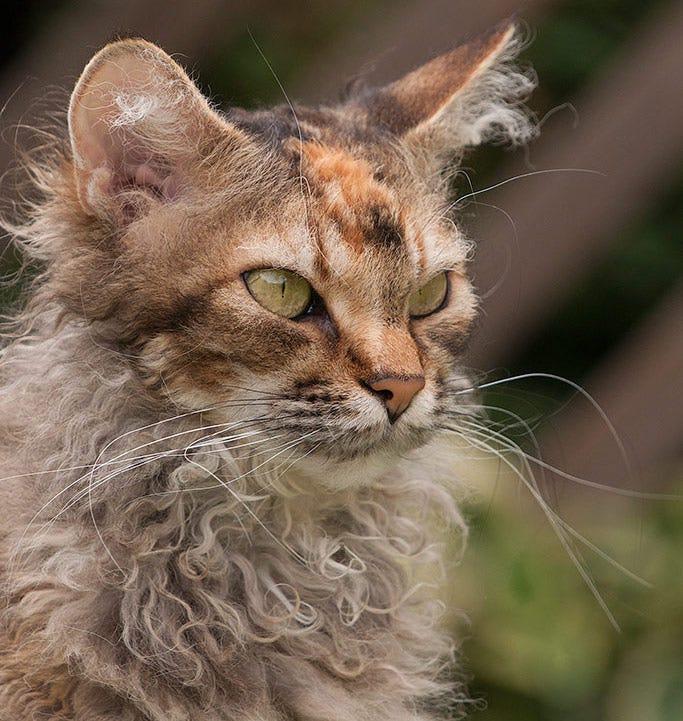
Along with their unusual, curly rex coat, the LaPerm cat showcases some impressive curly ear furnishings. The LaPerm is the result of a spontaneous mutation in an otherwise normal litter of kittens born on a farm. The farm’s owner entered the curly-haired cats into the Cat Fanciers’ Association (CFA), which helped them gain recognition all over the world.
LaPerm cats have energy that needs to be burned—not entirely unlike working dog breeds. These felines love a game of cat-and-mouse, playing with interactive toys and puzzles, and following around their humans as if it's their job.
Maine Coon
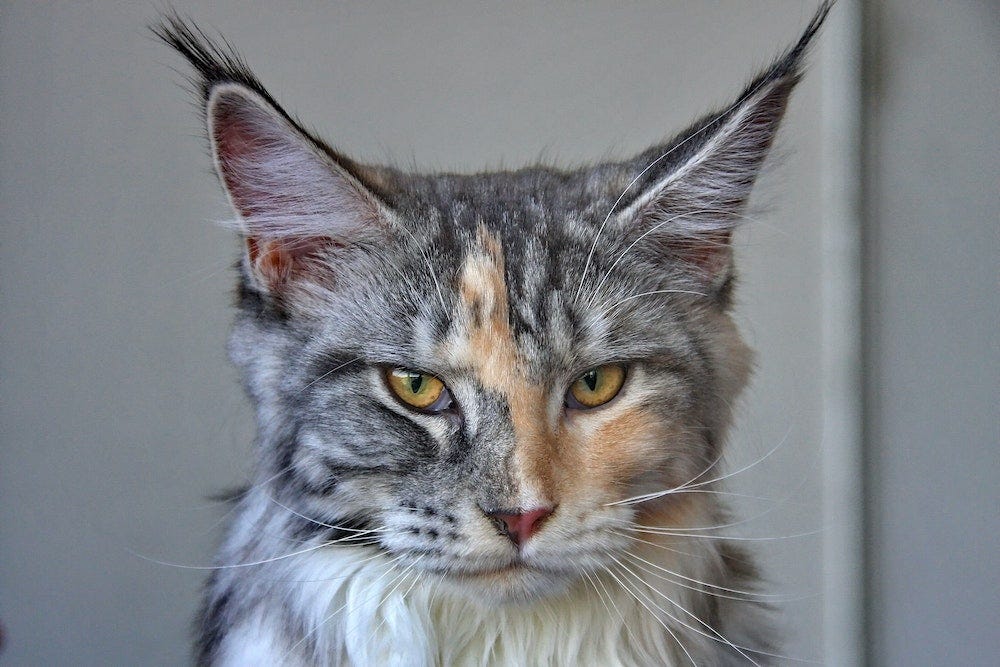
The Maine Coon most impressively sports ear tufts and ear furnishings. This cat breed is one of the largest and most popular in the world. Their powerful bodies, shaggy coats, and lynx-tipped ears might make you wonder if you’re staring at a wild cat!
Not to worry—Maine Coons are loved for their playful, adaptable, and friendly temperaments. They are easygoing enough to get along with just about anyone, and their dog-like playfulness means they can be trained to fetch and walk on a leash.
Nebelung
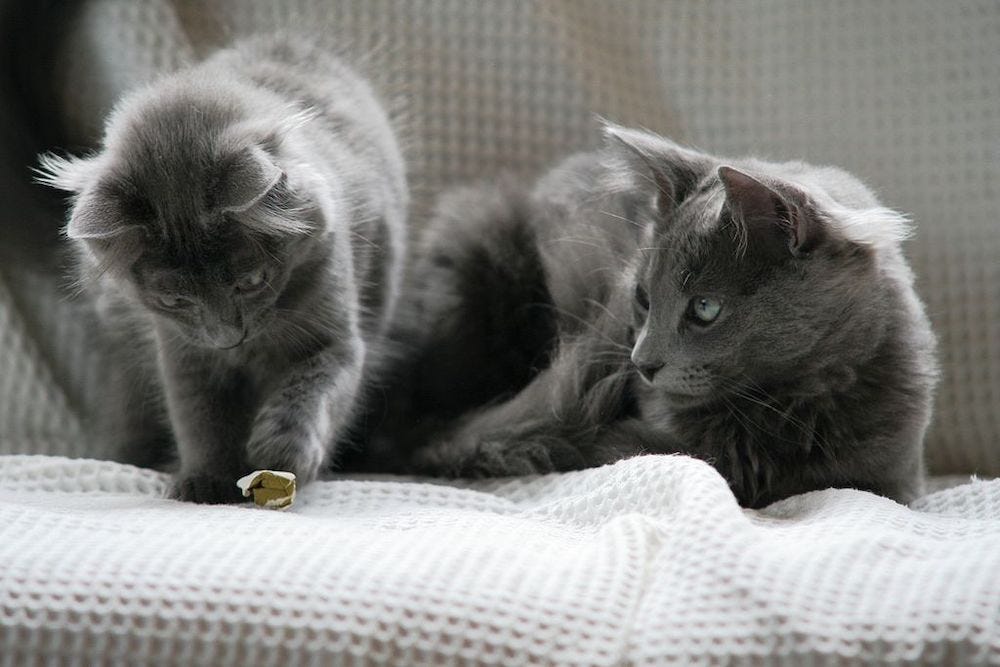
The Nebelung cat is often described as the long-haired version of the Russian Blue, which isn’t strictly true. This grey beauty has ear furnishings for days, along with a plumed tail and silver-tipped coats. Their wide-set, tufted ears contribute to an alert expression.
Like the Russian Blue, the Nebelung is known for a reserved, yet loyal nature. However, once they warm up to people, they can be extremely friendly and affectionate cats. As much as they will be by your side when you're home, they are also independent.
Norwegian Forest cat
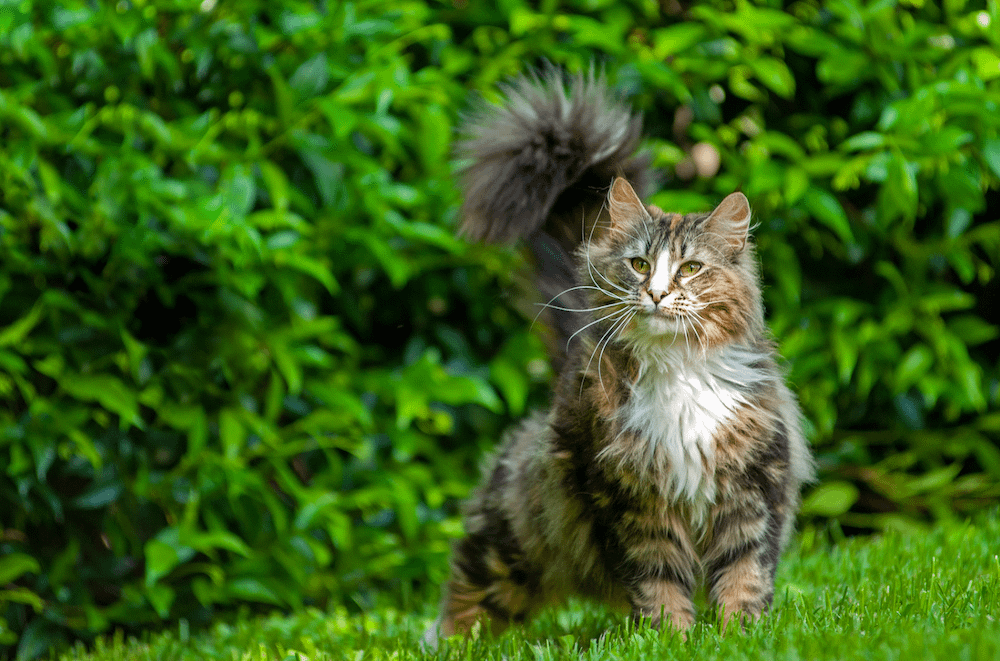
Along with their ear tufts and furnishings, the Norwegian Forest cat’s large, muscular body and dense, water-resistant fur coat have helped them survive many generations in the harsh climate of Scandinavia. Even their paws, limbs, and ears are on the larger side, allowing them to move quickly and stay alert at all times
These cats are unsurprisingly adaptable and independent, but they’re also quite friendly and playful. They will act as the protector and watcher of your household.
Persian
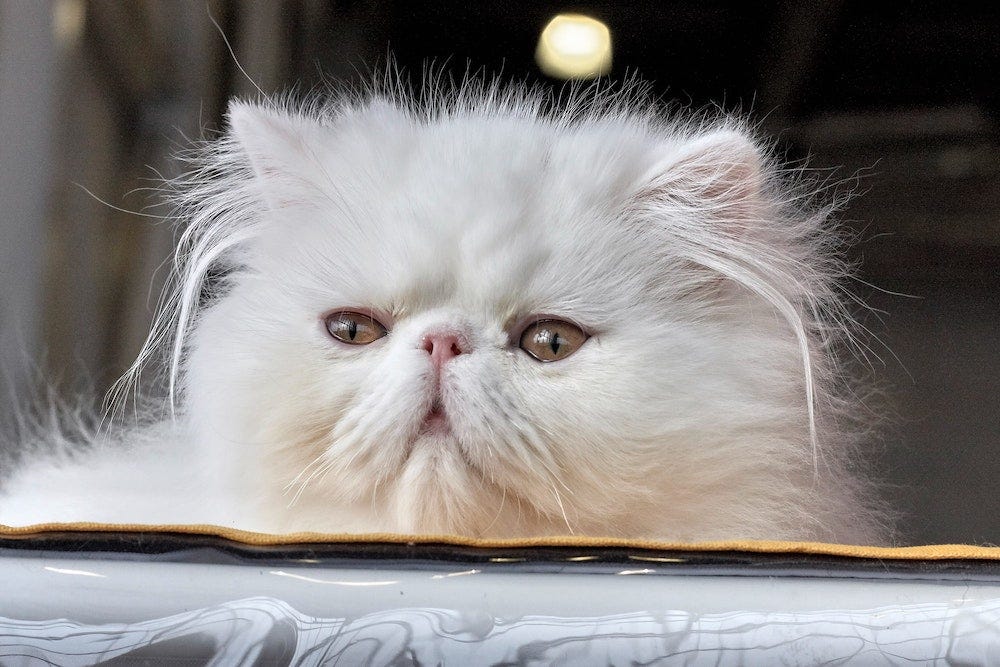
The Persian cat is famous for their silky white coat and fuzzy ear furnishings. They’re also one of the oldest cat breeds, likely having originated four to five centuries ago in Persia (modern-day Iran) and Turkey.
With a demanding fur coat, it’s a good thing this breed is typically happy to be groomed. Their calm, easygoing nature makes the Persian cat a nice family pet (as long as there isn’t roughhousing going on). They enjoy affection from their favorite humans, but aren’t likely to harass anyone for attention.
Pixie-bob
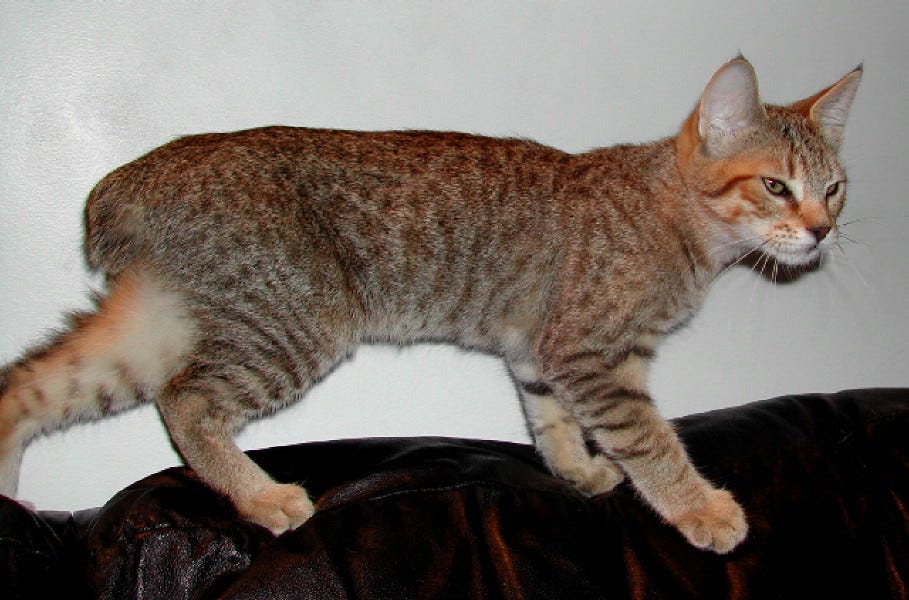
The Pixie-bob showcases ear tufts and an adorable bobbed tail. This cat is often born polydactyl, or with extra toes. One legend says that they can trace their roots to American bobcats, but that is just that—a legend.
Along with their tufted ears, they are known to be really, really furry—meaning that they may shed more than other cats do. Pixie-bobs are regarded as dog-like and will make best friends with dogs, cats, and kids in your home.
Ragdoll

The Ragdoll cat fits their name well, as they are known to collapse into the arms of anyone who holds them. Their lovely ear furnishings are quite compatible with the beautiful long hair this breed is known for.
These large cats love being cuddled, learn to come when called, and are easy to live with. Surprisingly, their silky coat doesn’t require a lot of upkeep. This is partially due to their sparse undercoat, which leads to less matting and tangling than most other long-haired breeds.
Siberian
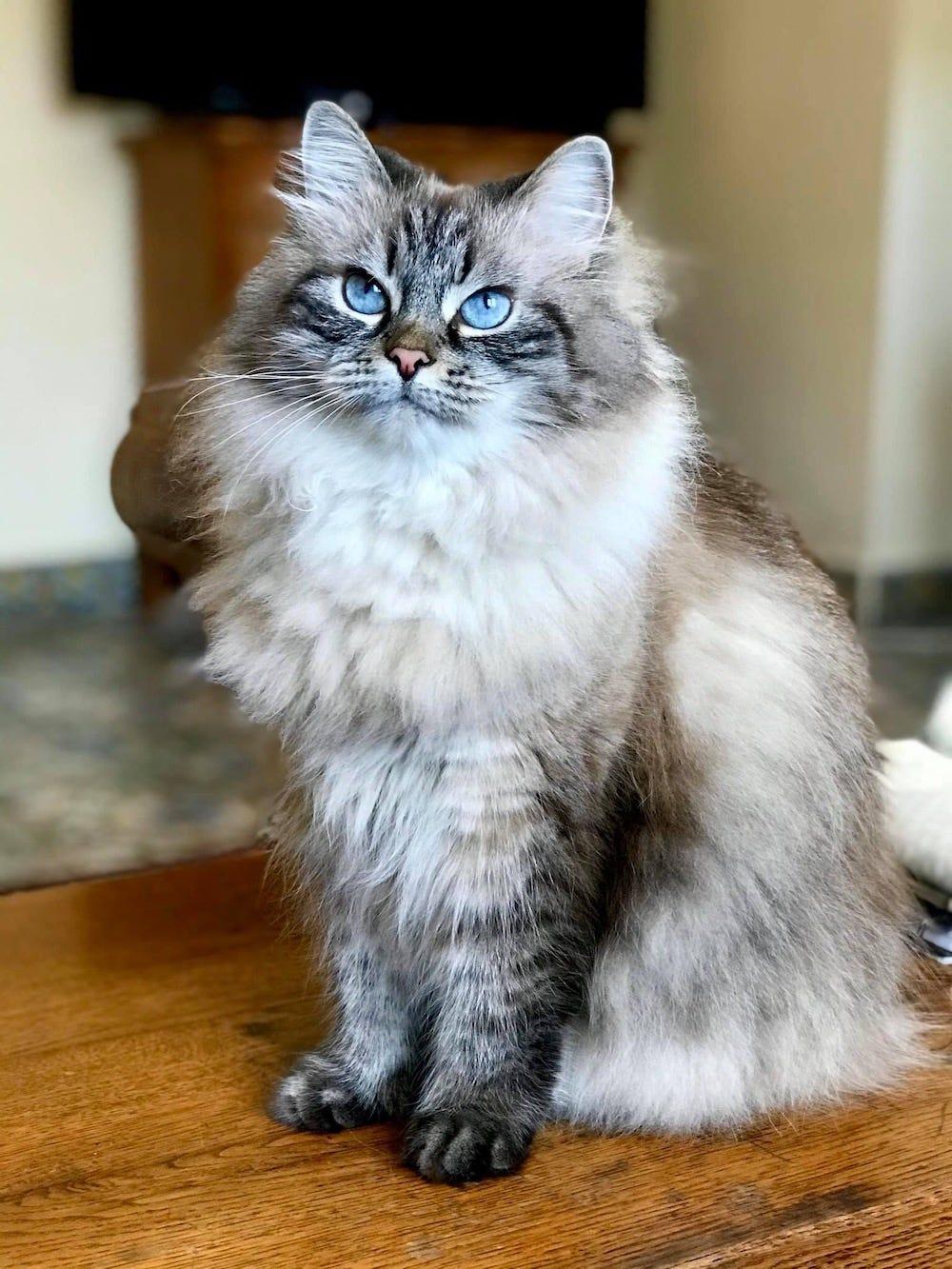
In addition to their darling ear furnishings, the Siberian cat sports a long, thick, protective coat. This is one of the oldest cat breeds in existence, with references dating back 1,000 years around their homeland of Russia.
Siberian cats’ ears don’t typically stand out as much as those on other large cat breeds. Even so, their ear furnishings complement their triple coat to add to the overall impressive stature of this ancient breed. These are active, intelligent, and people-oriented cats.
Somali
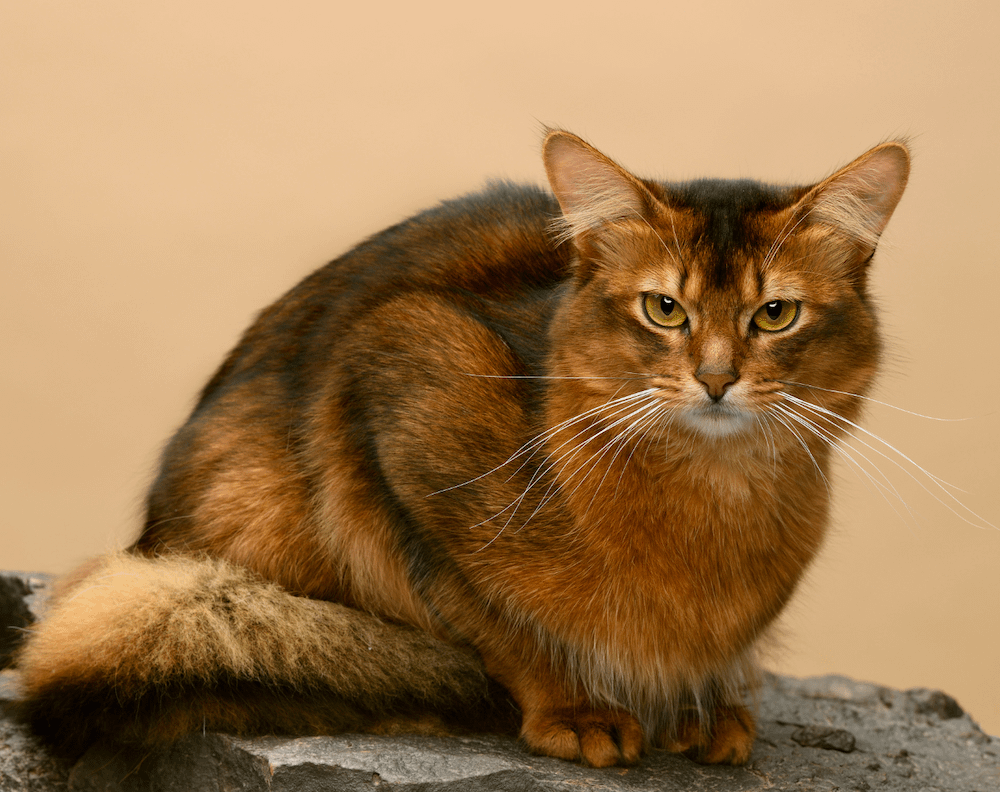
The fox-like Somali cat wouldn’t be complete without their ear furnishings, which are often as ruddy-colored as the breed’s stunning semi-long coats. Their large, alert ears and bright, expressive eyes only add to the allure of this uncommon cat breed.
These animated kitties are easy to entertain because anything and everything can be a game for them. They don’t love to be picked up and held, but they’ll take every opportunity to play and interact with their human companions.
Turkish Angora & Turkish Van
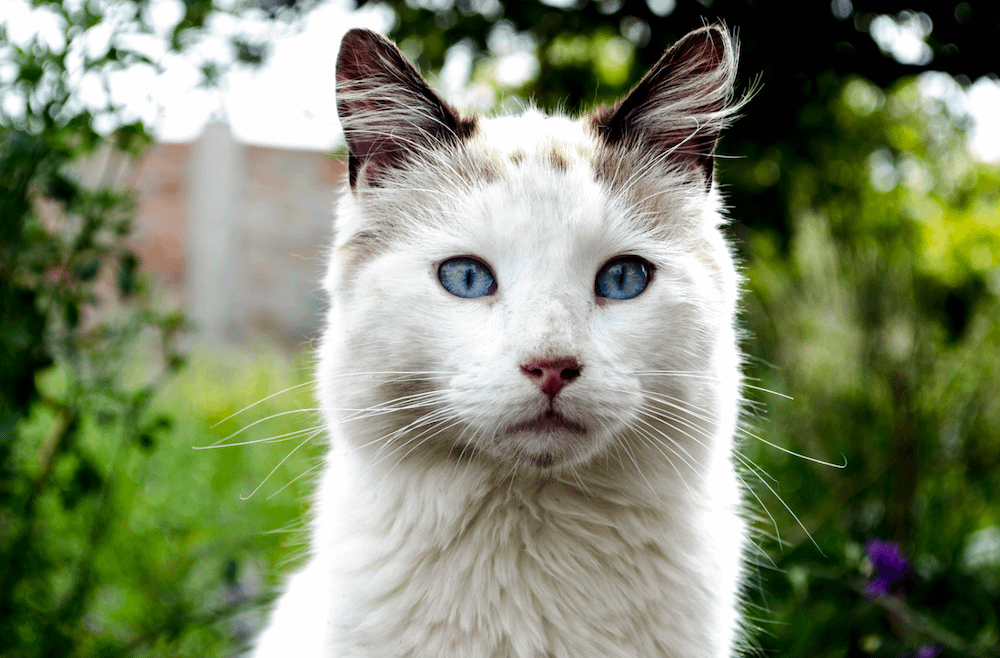
These long-haired cousin cat breeds, Turkish Angora and Turkish Van, can have both ear tufts and ear furnishings. They are some of the oldest breeds in existence and are known for their love of water. They’re even excellent swimmers!
Turkish Van cats are typically large with colored patches of fur. Turkish Angora cats are small and usually all white. Both breeds are stunning and sport adorable ear looks.
Whether or not your cat has ear tufts, you want the best for them—and yourself. Make pet care easier and smarter with a self-cleaning litter box.
Photo credits:
- Highlander: © Christina Hall / CC-BY-SA-4.0
- Maine Coon: Sergey Semin via Unsplash
- LaPerm: © KRL-LPL / CC-BY-SA-4.0
- Nebelung: © Nebelung / CC-BY-SA-3.0
- Persian: Sergey Semin via Unsplash
- Siberian: © Ozwina / CC-BY-SA-4.0
